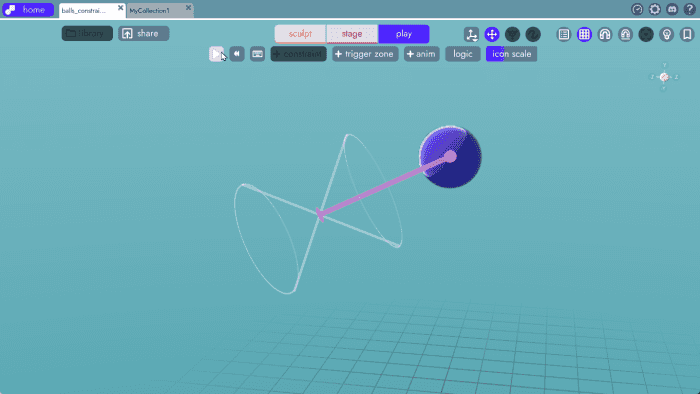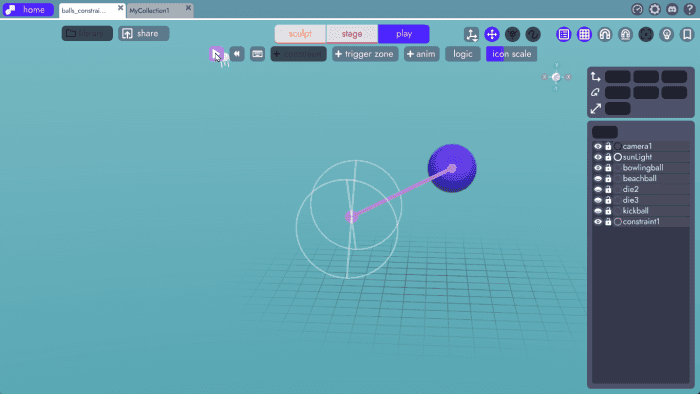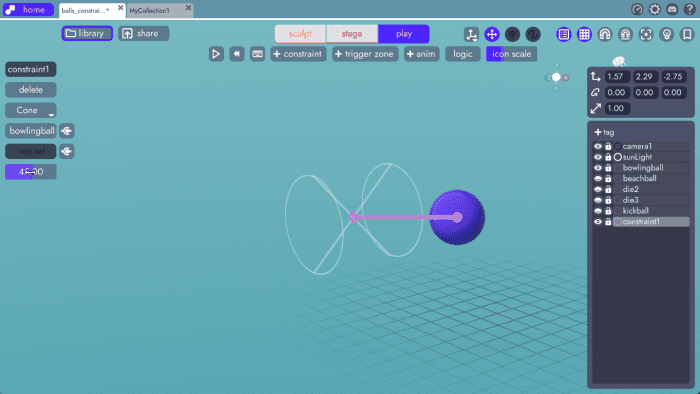Cone
Info
This article covers the behavior and properties of this particular constraint. For instructions on how to add constraints to your project and connect them to physics objects, see the Physics Constraints Overview article.
Behavior
The cone constraint keeps connected objects moving within a cone-shaped area or, if they start outside of it, keeps them from entering the cone. Technically, it’s shaped more like an hourglass since the cone is mirrored at the origin. Let’s take a closer look at how it works.

In the first half of the gif above, you can see the connection line being forced to stay within the cone. After the ball is moved between the cones (hourglass) you'll notice it is swinging more freely as it slips off the outside of the cone.
These can be very helpful for creating swinging objects that have some freedom but are still largely constrained to a primary axis.
Properties
Unlike some of the other constraints, the cone does not define min/max values for the connection line. Instead, the placement at author-time determines how long the rigid connection for this constraint is.

Aside from that, the only properties exposed by the cone constraint is the cone value, which determines the angle of the cones (which by default is set to 45 degrees).

The lower the angle, the more constraint you put on an object inside the cone and less restriction on an object outside.
Success
Learn about the next type of constraint, Slider Constraints.